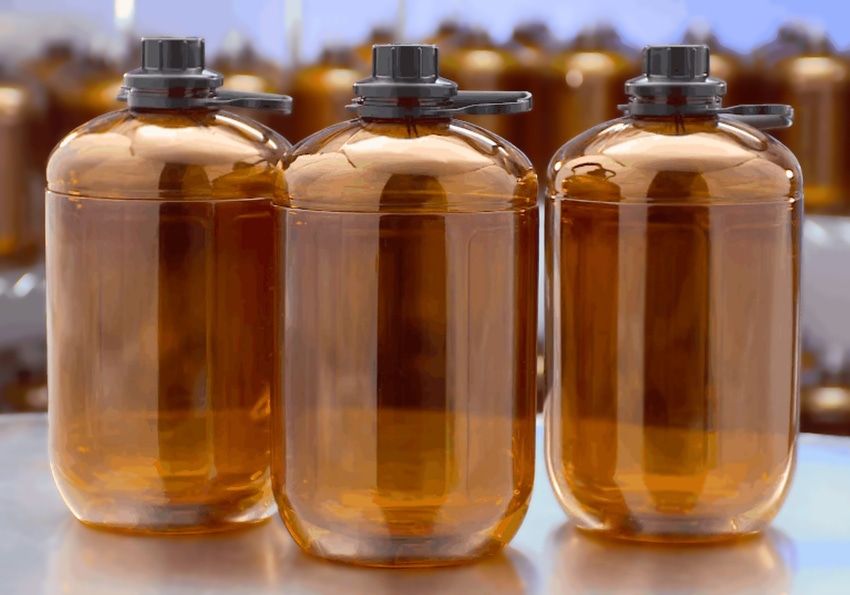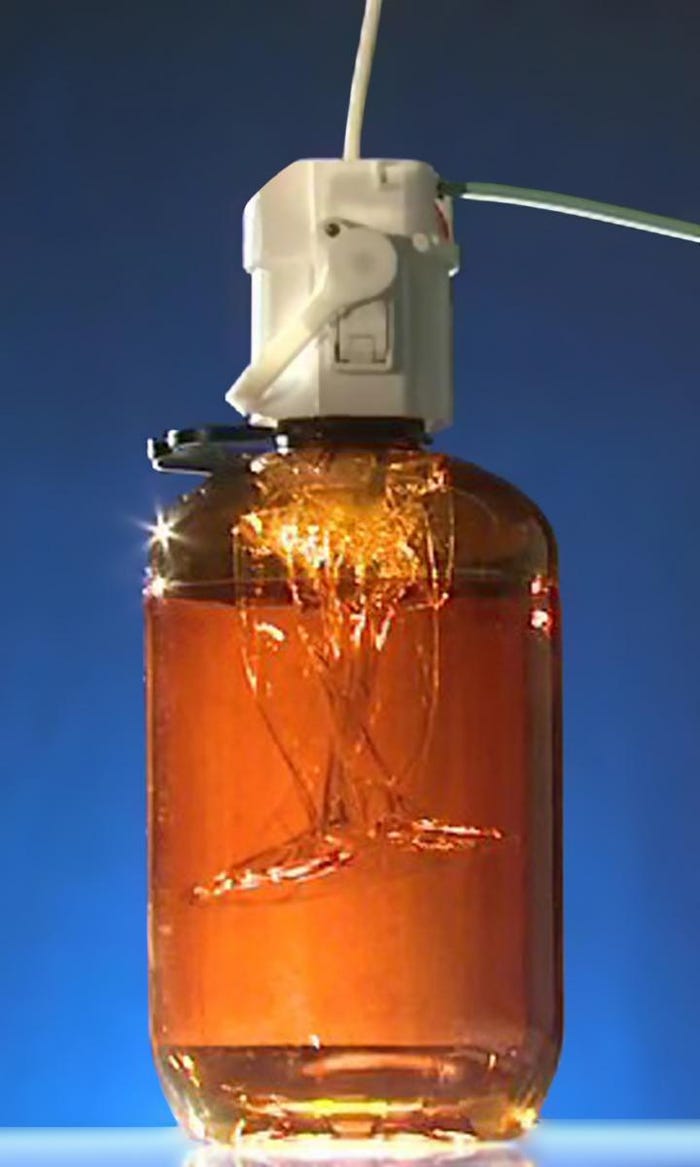Atlanta—Tracy Momany showed audience members of The Packaging Conference (Feb. 4-6; Atlanta, GA) a video of a 4-ft drop demonstration between a glass bottle and a new plastic packaging called BrightPak."Being a plastics person, I couldn't resist showing this video where the glass bottle breaks, while the plastic bottle bounces," said Momany, VP of Plastics Technologies, Inc. (PTI).
February 15, 2013

Atlanta—Tracy Momany showed audience members of The Packaging Conference (Feb. 4-6; Atlanta, GA) a video of a 4-ft drop demonstration between a glass bottle and a new plastic packaging called BrightPak.
"Being a plastics person, I couldn't resist showing this video where the glass bottle breaks, while the plastic bottle bounces," said Momany, VP of Plastics Technologies, Inc. (PTI).
 Momany's presentation at the conference featured PTI's collaboration with ATMI, a provider of packaging solutions for specialty liquid materials. The companies worked together to produce BrightPak, a liquid dispensing and delivery system for sensitive chemicals that features a collapsible rigid liner inside a bottle.
Momany's presentation at the conference featured PTI's collaboration with ATMI, a provider of packaging solutions for specialty liquid materials. The companies worked together to produce BrightPak, a liquid dispensing and delivery system for sensitive chemicals that features a collapsible rigid liner inside a bottle.
"This is a new innovation that has the potential to transcend an industry and market," said Al Botet, director of marketing for ATMI.
Packaging requirements
ATMI's objective was to create an alternative to large glass bottles and other traditional systems that store and dispense photolithography chemicals used in the manufacturing of semiconductors, LEDs, and flat panel displays.
Customers requested a package that reduces customer risk; while at the same time delivered improved safety and performance. In addition, customers wanted improvements in tool uptime, particle yield and material utilization.
"The traditional container in this space is typically in the glass bottle—but we looked at how we could change the game," Botet said.
The company found that blowmolding would enable low-cost manufacturing while also allowing flexible design capabilities.
Together, ATMI and PTI overcame multiple structural and production challenges to make commercialization of BrightPak systems a reality.
The primary objectives for the interior rigid liner were that it had to collapse at low pressure without tearing, be compatible with various chemicals and dispense 99% of the product. The bottle around it had to withstand six times the dispensing pressure (greater than 90 lb per square inch) to provide an additional safety cushion.
Additionally, the system needed to withstand shipping and storage conditions down to -20°F and also block out 99.9% of light from 190-425 nanometers, which is in the ultraviolet (UV)-to-visible range.
"Ship in a bottle" challenge
The BrightPak system's primary components are created from two separate preforms. The polyethylene terephthalate (PET) preform is used to blowmold a bottle with a capacity of 4.6 liters.
When it came to material selection, Momany said PET was selected due to its ability to withstand the  dispensing pressure, plus its cost effectiveness and robustness.
dispensing pressure, plus its cost effectiveness and robustness.
The second preform is made from polyethylene naphthalate (PEN) and is used to create the rigid, three-dimensional collapsible interior "liner" which holds the chemicals. PEN was chosen also due to its compatibility with various chemicals, plus its robustness and flexibility, according to Momany.
Once the materials were selected, the next big issue was the "ship in a bottle" challenge of how to place the rigid inner PEN liner into the outer PET bottle. PTI eventually developed a proprietary solution.
The two-piece assembly fits into a third component, a blow-molded, full-body PET "base cup." Since the PET bottle has structural panels which make labeling challenging, the textured full body cup facilitates branding options and also provides a stable base for the bottle's slightly rounded bottom. The packaging's amber color provides another layer of UV and shipping protection.
The BrightPak package dispenses liquids without allowing air into the chemistry, which eliminated the sources of bubble formation and particle defects caused by pump and vacuum delivery containers.
Drive gas can be applied between the rigid liner and the bottle. Once in this space, the pressure from the gas squeezes the rigid liner causing it to collapse and force the chemical out of the bottle. The system dispenses the chemical through a sealed pathway from the liner to the dispense tool, and it protects the chemical contents from external contamination. The rigid liner eventually collapses fully and ensures optimal dispense results.
The BrightPak technology, which ATMI also refers to as a "double containment" system, offers multiple benefits, including approximately 21% additional volume compared to the typical one-gallon glass bottle used in lithography applications today. The higher fill volume is possible without impacting labeling surface, the handle location or the physical dimension of storage and usage locations.
Additional advantages include chemical protection from environmental factors, as well as accidents and operator errors. Unlike glass bottles, the BrightPak system is made from shatter-resistant plastic resins minimizing the chance of costly chemical spills and production shutdowns, according to PTI. The system also reduces the amount of chemical residuals requiring disposal.
Botet said they have performed a lifecycle analysis and found that this package is very "green" compared to the traditional glass bottles. The BrightPak is recyclable and the interior rigid liners are more disposable-friendly, yielding a much smaller carbon footprint than glass bottles.
Beyond chemicals
Botet said they believe there is potential for this packaging beyond its original intent and that the company is interested in pursuing licensing opportunities. Potential markets include adhesives, pharmaceutical, food, beverage and others. The resin used for each layer can be altered depending on performance requirements.
"We developed the technology for our customers, but there is no reason why we couldn't license the technology to other industries," he said.
About the Author(s)
You May Also Like


